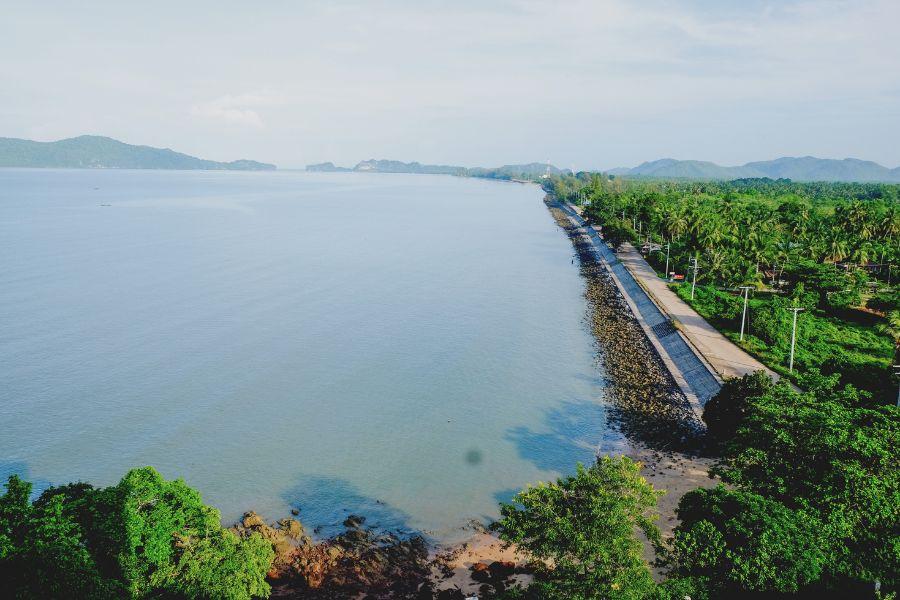Eco-Friendly Travel Options from Krabi to Koh Lipe
Sustainable travel between Krabi and Koh Lipe requires thoughtful choices that reduce environmental impact while supporting the local community. This guide outlines the most eco-friendly transportation methods, travel practices, and actionable tips to ensure a responsible journey to this idyllic island in Tarutao National Marine Park.
1. Eco-Conscious Transportation Options
Combined Shared Van + Ferry or Speedboat
- Overview: The most common route consists of a shared, air-conditioned van from Krabi Town or Ao Nang to Pak Bara Pier, followed by a speedboat or ferry to Koh Lipe.
- Duration: Approximately 5.5 to 7 hours in total
(Van: 3–5 hours, Boat: 1–1.5 hours) - Sustainability Advantage: Consolidated group travel reduces the number of vehicles in operation, thereby minimizing carbon emissions compared to private taxis.
- Tip: Select modern shared vans, which are typically more fuel-efficient and emit less per passenger.
Direct Ferry or Speedboat from Krabi
- Departure Point: Ferries and speedboats depart from Klong Jilad Pier and other Krabi piers during high season.
- Duration: 3.5 to 6 hours, depending on vessel type and sea conditions.
- Sustainability Note: Ferries, with higher passenger capacity, tend to be more fuel-efficient per person than speedboats.
- Recommendation: Opt for ferry operators that practice reef-safe boating and minimize engine idling near coral reefs.
Public Transport + Ferry (DIY Approach)
- How it Works: Take a public bus or train to Pak Bara Pier, Trang Pier, or Hat Yao Pier, followed by a scheduled ferry.
- Environmental Benefit: Public transportation typically has the lowest per-passenger emissions.
- Considerations: This route requires more logistical planning but significantly reduces your carbon footprint.
2. Sustainable Practices During Transit and on the Island
- Travel During Off-Peak Seasons: Avoid major holidays and peak tourist months to reduce overcrowding and ecological strain.
- Use Reusables: Carry a refillable water bottle, metal straw, and reusable bag. Koh Lipe has Trash Hero refill stations for water.
- Support Local Businesses: Choose Urak Lawoi longtail boat operators and dine at locally owned establishments.
- Minimize Plastic Usage: Politely decline single-use plastic bags, utensils, and water bottles whenever possible.
- Participate in Cleanups: Join weekly beach clean-up events on Pattaya Beach, often organized by Trash Hero Lipe.
- Eco-Friendly Activities: Prefer kayaking or paddleboarding for island-hopping and snorkeling instead of motorized boats.
3. Responsible Sea Travel & Marine Preservation
- Choose Ethical Operators: Select ferry companies that disclose sustainability initiatives, such as modern, low-emission vessels and coral-safe anchoring practices.
- National Park Regulations: Koh Lipe is part of Tarutao National Marine Park. Visitors must pay an entrance fee, which contributes to environmental conservation.
- Reef-Safe Sunscreen: Use mineral-based sunscreens and avoid application just before entering the sea to prevent coral bleaching.
4. Quick Comparison: Eco-Friendly Route Options
| Transport Method | Emissions Level | Cost (THB) | Duration | Notes |
|---|---|---|---|---|
| Shared van + ferry | Moderate–Low | 1,400+ | 5.5–7 hours | Most common and coordinated option |
| Public transport + ferry | Low | 1,100+ | 6–8 hours | Requires planning; most sustainable |
| Direct ferry (large vessel) | Moderate | 1,300–1,800 | 4.5–5 hours | Better than speedboats in fuel efficiency |
| Speedboat (direct/indirect) | High | 1,800–2,500 | 3.5–4 hours | Fastest but highest emissions |
| Private taxi/car | Very High | 3,000–5,000 | 6–8 hours | Least sustainable, strongly discouraged |
5. Final Eco-Conscious Travel Tips
- Bundle Your Bookings: Use platforms that partner with responsible transportation providers.
- Travel Light: Lighter luggage reduces fuel consumption on boats.
- Be Water-Wise: Water is scarce on Koh Lipe. Use it sparingly for showers and laundry.
- Respect Local Culture: Engage with communities respectfully, learn about Urak Lawoi traditions, and avoid exploitative tourism.
By consciously selecting eco-friendly options and adopting sustainable behaviors, you help preserve the delicate marine and island ecosystems of Southern Thailand.
Frequently Asked Questions (FAQs)
1. What is the most eco-friendly route from Krabi to Koh Lipe?
Taking a public bus to Pak Bara Pier followed by a scheduled ferry is the most environmentally responsible option.
2. How long does it take to travel from Krabi to Koh Lipe?
Depending on the method, it takes between 3.5 to 8 hours, with direct speedboats being fastest but least sustainable.
3. Is there a direct ferry from Krabi to Koh Lipe?
Yes, during the high season (November–April), direct ferries operate from Klong Jilad Pier to Koh Lipe.
4. Are speedboats eco-friendly?
Speedboats have higher emissions per passenger compared to ferries. Use only when necessary, and choose newer, efficient models.
5. What is the cost of an eco-friendly transfer?
Prices range from 1,100 THB for public transport + ferry to 1,800 THB for direct ferries.
6. Are there eco-conscious ferry companies I can trust?
Yes. Look for operators who openly communicate about fuel efficiency, avoid coral reefs, and support local conservation.
7. Can I bring my own water bottle to refill on Koh Lipe?
Absolutely. Refill stations are available, especially through the Trash Hero program.
8. Is there a national park fee for visiting Koh Lipe?
Yes, visitors must pay an entrance fee (typically around 200 THB), which supports marine park conservation.
9. How can I reduce my plastic use during the trip?
Bring reusable gear, shop at local markets, and decline plastic packaging wherever possible.
10. What eco-friendly activities can I enjoy on Koh Lipe?
Opt for kayaking, snorkeling without motors, beach clean-ups, and visiting community-run eco projects.
For a Complete Travel Guide
For more detailed information on transportation options, booking tips, itinerary suggestions, and everything you need to know about planning your trip, visit our full guide:
